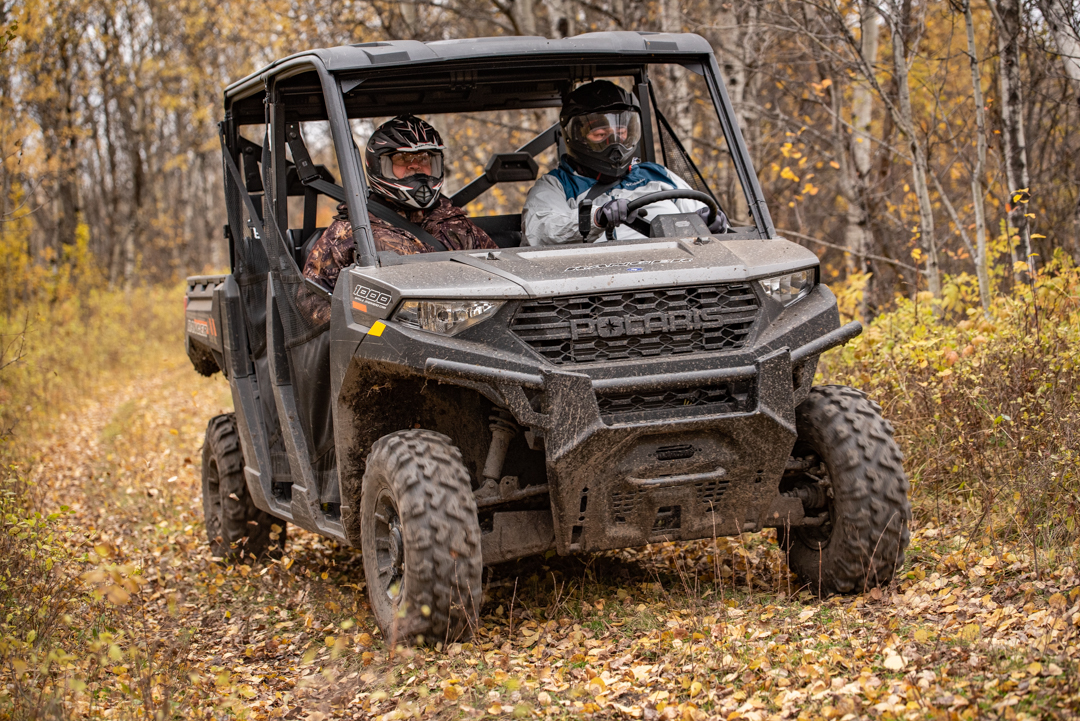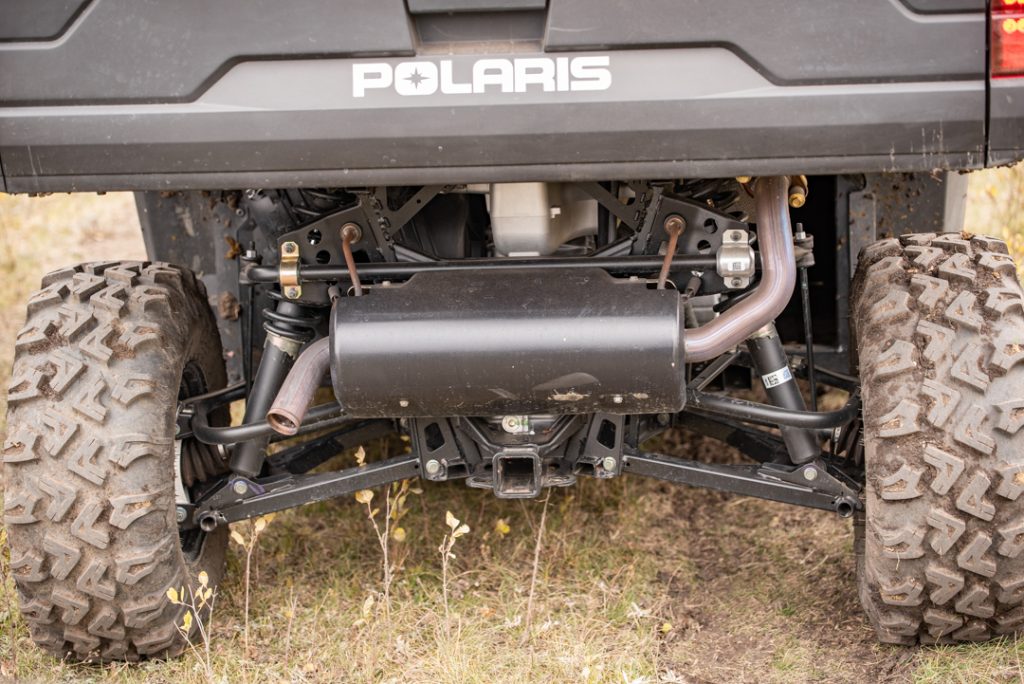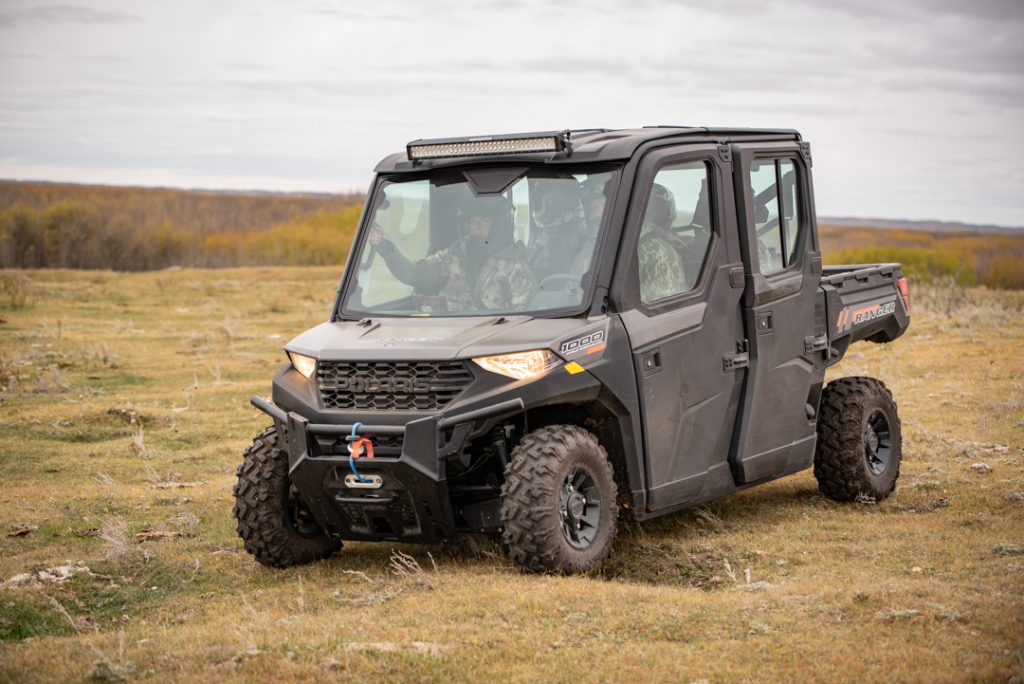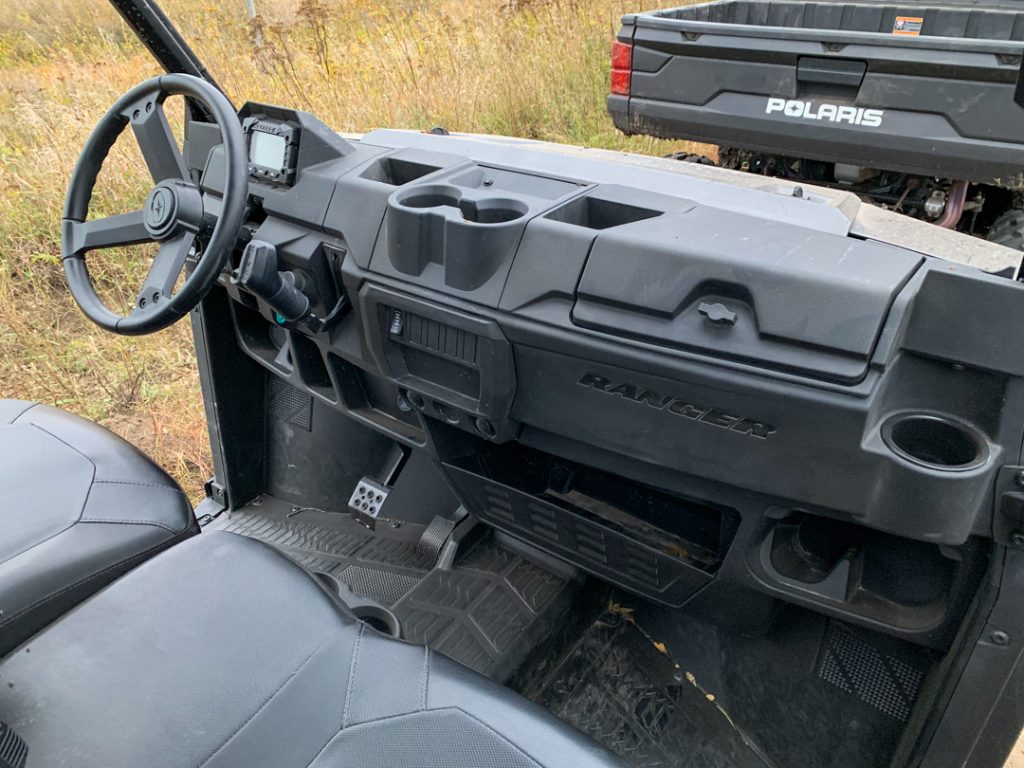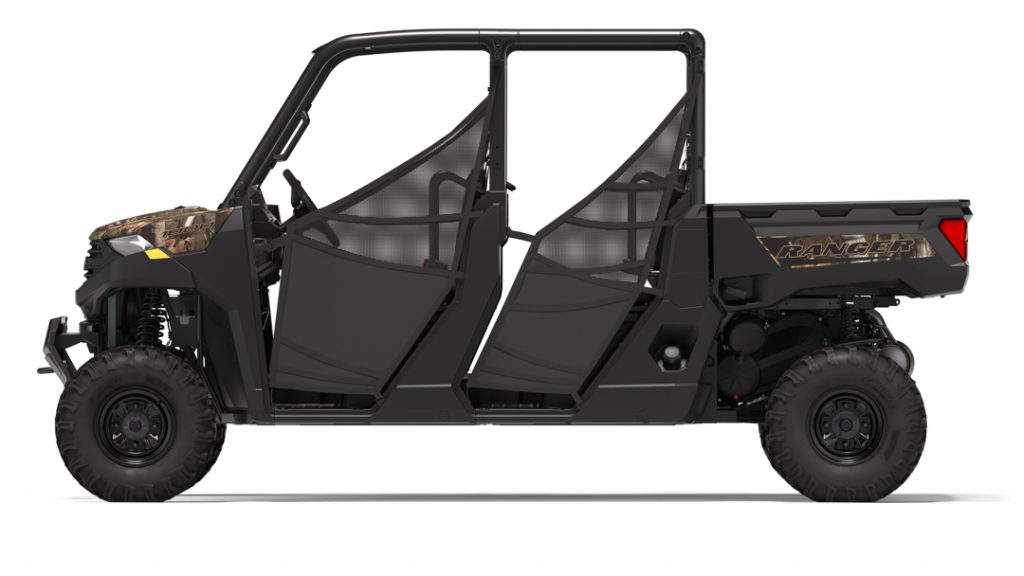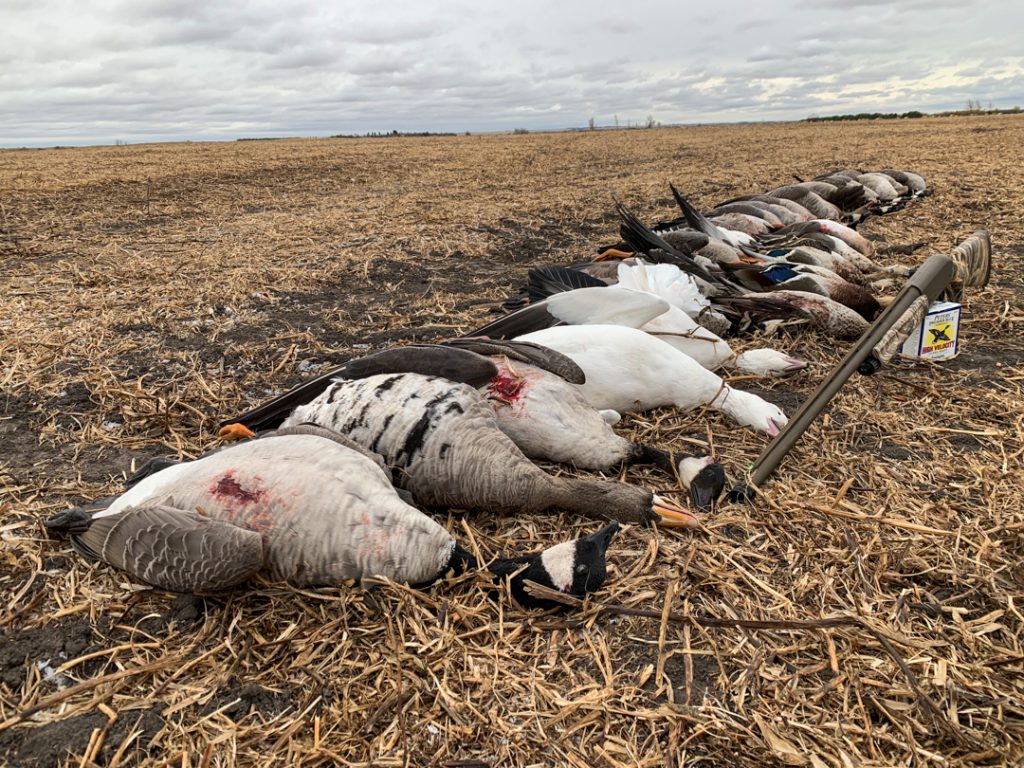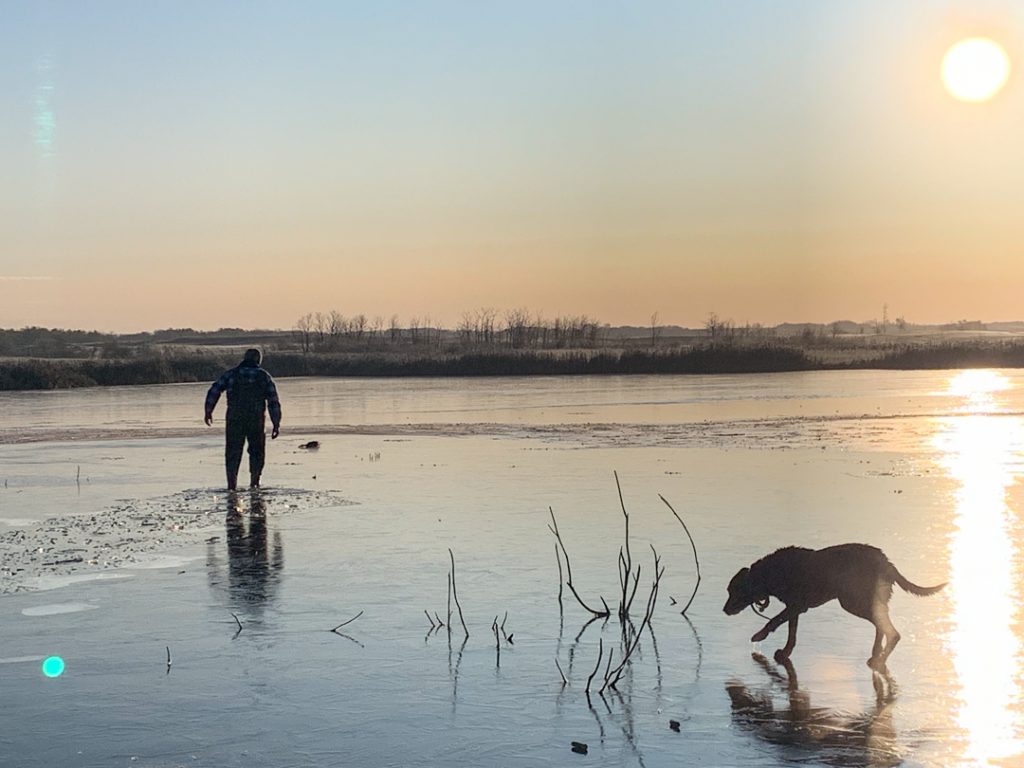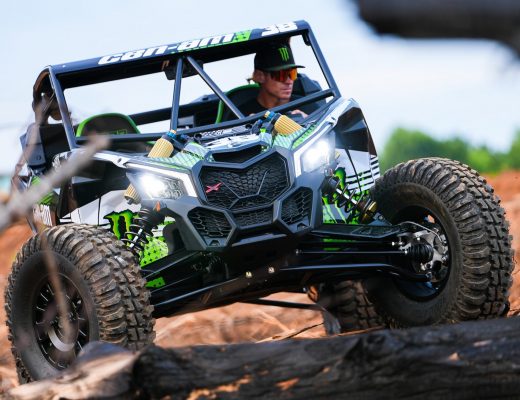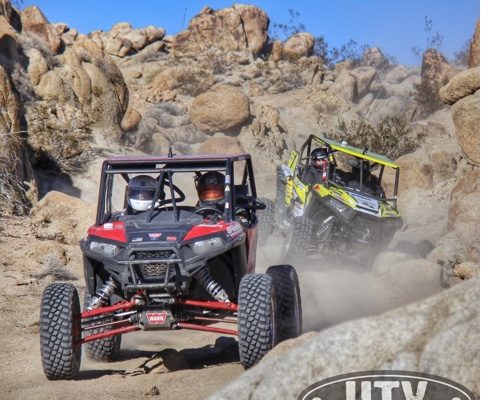By: Casey Cordeiro
Mixing UTV’s and hunting is like mixing apple pie and vanilla ice cream – both are just natural together. If you aren’t a fan of apple pie and ice cream together, well, then we need to have a chat. The chat will probably morph into how UTV’s go right together with hunting, but that is natural for us – we just love talking about how capable today’s UTV’s are in their natural environment.
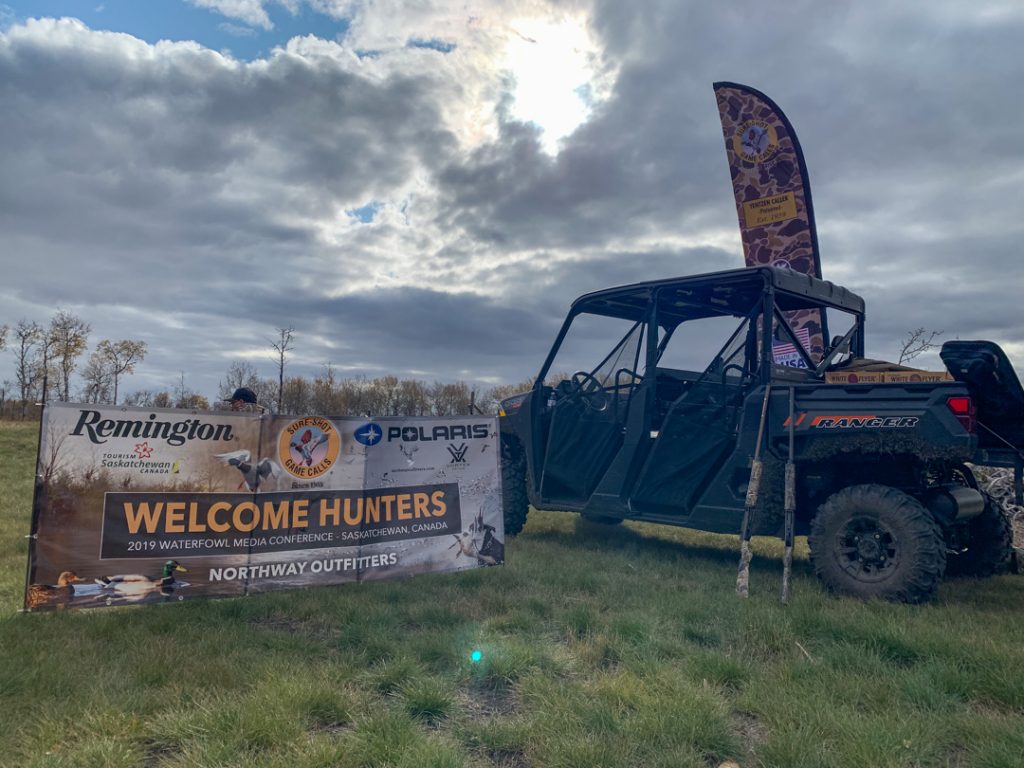
The latest flock of UTV’s are well suited to helping hunters get out into the wild with ease. And, comfort.
Utility vehicles like the Polaris Ranger have always been versatile machines. Driver’s appreciate how they are capable around the ranch, yet also equally as capable out on the trail on the next hunt or family adventure. Like many other manufacturers, Polaris sees this correlation and knows that many Ranger buyers are using their machines for hunting. This year, I was invited to test out the adventure and hunting capabilities of the all-new Ranger 1000 in the beautiful valleys near Saskatoon, Saskatchewan, Canada where the various waterfowl species are currently migrating. This was my first time out hunting in general – needless to say, I was excited for the experience and the opportunity to bring in my UTV knowledge to the trip. Hunters from all over the world descend on this area to hunt several different waterfowl species, including several duck species, Canada Geese, and more.
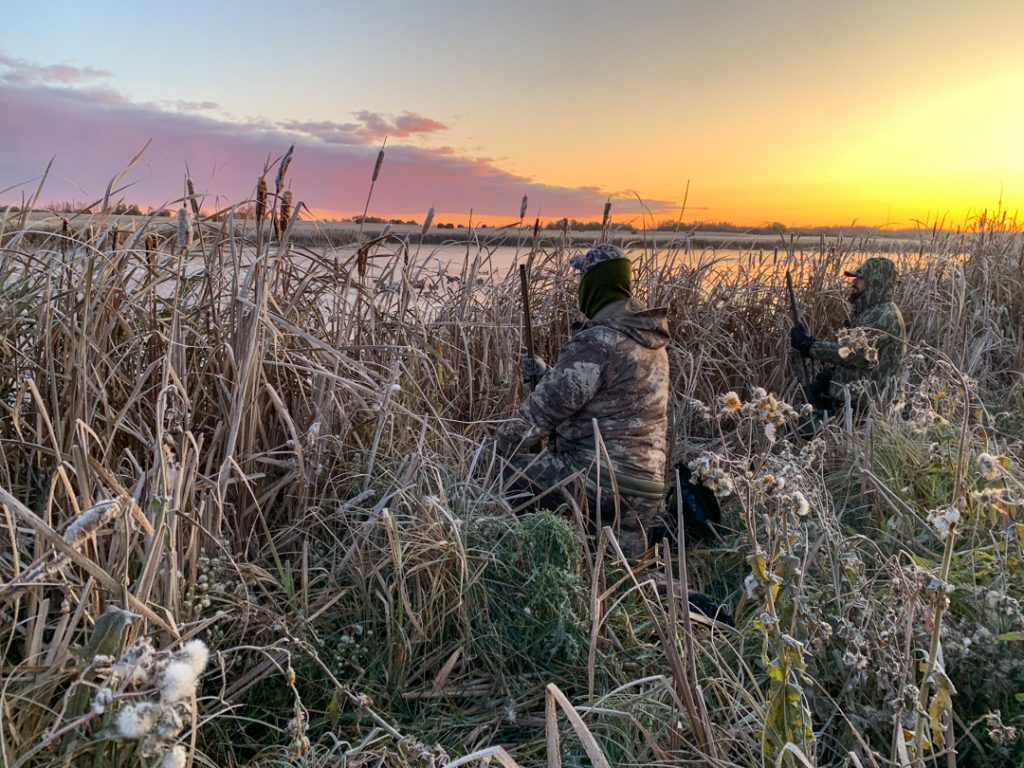
All of us were situated, ready, and loaded well before dawn. Decoys were in the water. There is nothing quite like this.
To get to some of our hunting destinations, we utilized this all-new Ranger 1000, which replaces the all-time best selling UTV on the market, the Ranger XP 900. In order to test out the capability of this all-new Ranger 1000, we loaded up the CREW models on hand with multiple people and headed out to the hunt locations, in about 0 degrees Celsius nonetheless (the coldest we saw was -12 degrees C on this trip – yikes!). Not only would we test the capability on tight two track trails, but we would also load these up with gear, people, and all of the necessities to take out on a good trail ride to your favorite hunting spot. Let the adventure commence…
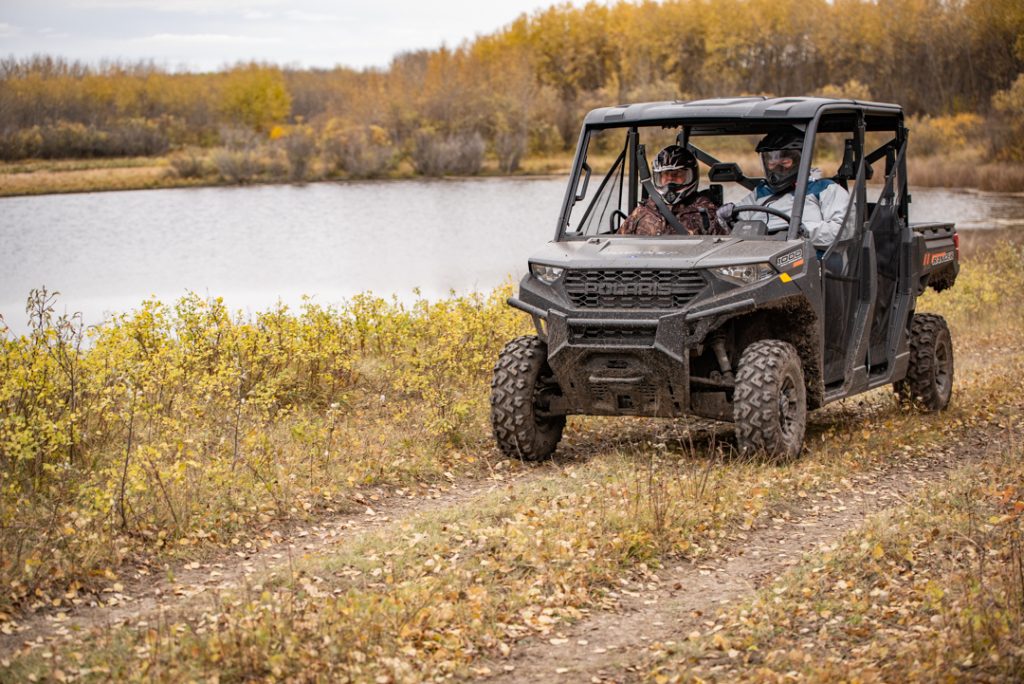
The Ranger 1000 CREW is a very capable at hauling 6-people, all of your gear, and your catch back home from those “way out” hunting spots.
The first thing you notice about the new Ranger 1000 is the latest styling update to the front fascia. The tweaks are purposeful and tasteful, giving the 1000 a bold stance that doesn’t outshine its bigger brother – the Ranger XP 1000. The Ranger 1000 and Ranger XP 1000 are closely related on the chassis front with many of the same components used throughout, but the XP-model has upgrades that the non-XP model does not include, like a more powerful engine, a bit more cargo and towing capacity, and some updated creature comforts on the inside of the vehicle. Not having these upgrades on the Ranger 1000 might seem like a deficit, but the real beauty of this machine is the fact that the price is so attractive for a wide range of buyers. The Premium CREW model we drove at this event comes with an adjustable driver’s seat, steel front bumper, and premium paint. In total, this model starts at $16,499 MSRP and goes down from there with two more trim levels – the camo EPS model retails for $16,399 and the base model retails for $14,399. The CREW hauls 6 people, and the 3-seat model holds, obviously, 3 people. Base 3-seat models retail for $12,999 MSRP and go up from there. The EPS trim level adds power steering and retails for $13,999 MSRP. Camo EPS Ranger’s retail for $14,899 MSRP, while the Premium model adds an adjustable driver’s seat, steel front bumper, and premium paint with a retail price of $14,999 MSRP.
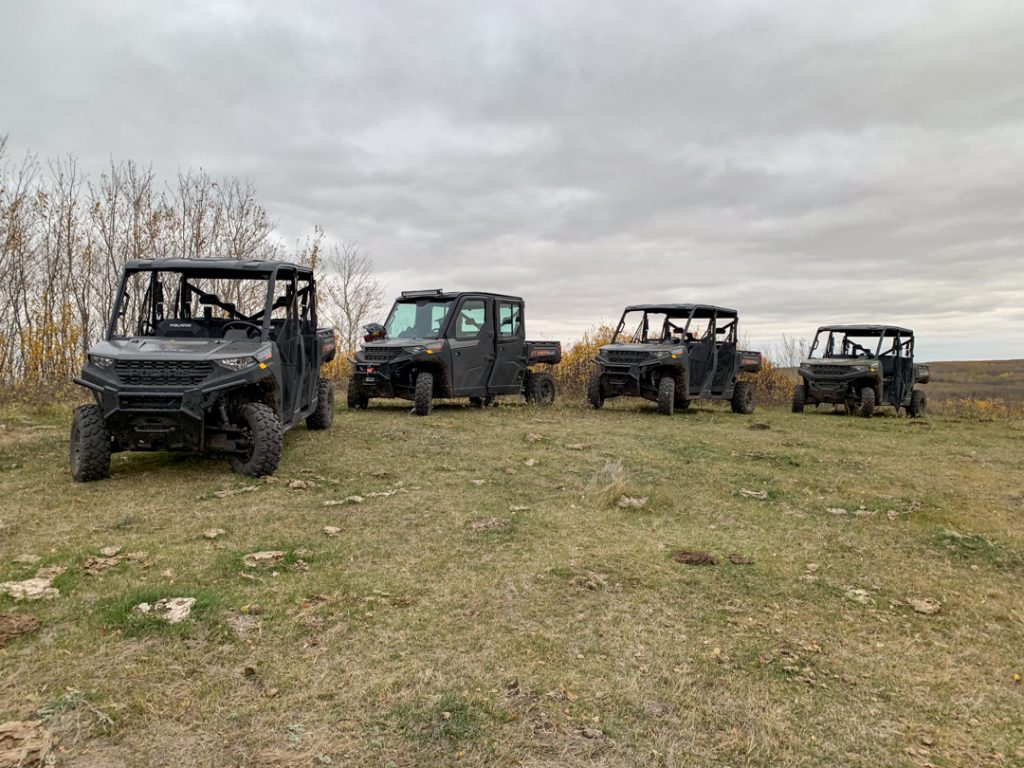
CREW models perform well on the trails, and the Ranger 1000 is a good step forward for the brand. If you don’t need to haul 6-people, the 3-seater will prove to be even more capable on the trails with a shorter wheelbase.
No matter which Ranger 1000 model you choose, they all come with an upgraded-for-2020 engine. The twin cylinder Engine now comes with a Single Over Head Cam (SOHC) layout instead of a twin cam. This change was made in an effort to optimize the low-end torque delivery of this engine, as well as keep the price down on this model. Both of those goals were accomplished with this change. I have to say that I was initially skeptical on how this Ranger 1000 would deliver its available power, especially on the tight trails where drivers are constantly working the throttle. Much to my amazement, the 61 horsepower and 59 ft-lbs of torque are all delivered very smooth and very low in the RPM range, just like Polaris was aiming for. Powering out of corner, this 999cc, liquid cooled engine did not lack any grunt. Sure, the XP-model would have more bite, but I, honestly, don’t think it would be needed in a vehicle like this. The Ranger 1000 does a great job of powering you around the hills and trails, and it has more than enough grunt for the ranch. It’s quiet, has smooth throttle response, and it handles the the terrain very well.
This new model received several updates in the suspension department for 2020 as well, including sealed bushings and bearings. With a traditional layout of front and rear a-arms, we found that the 10” of dampened movement gives this vehicle a smooth ride that the Ranger lineup has been known for. Tackling rutted terrain proves to be a smooth experience in this Ranger 1000, and this compliant ride will keep passengers comfortable and in the seats for many hours. One of the best parts about the 2020 upgrades is that there are no longer squeaks coming out of the sealed a-arm bushings on the front and rear suspension components. This is a very welcomed upgrade to the Ranger lineup as the past models were known for squeaking tendencies, especially over time. Even when loaded down with additional passengers, I noticed how this vehicle stayed flat in the corners and didn’t wander through the ruts on the trail. Kudos to the tires for the great traction in a variety of terrains we tested them in, too. The only place where I was left thinking a bit more traction would be handy was in the mud – these tires just didn’t have the bite needed in the mud and they drifted a bit through the ruts. For most people, they will work great for all-purpose use. On our ride, we also appreciated the updated-for-2020 skid plate package and 12” of ground clearance, both of which were tested when we loaded down the Crew model with 6-passengers. When loaded, you definitely test the skid plates with a reduced amount of ground clearance, but we never had any issues hanging up on obstacles with the extended wheelbase and additional weight. Sure, if you attack a rock garden with 6 people in it, the Crew is going to scrape it’s way through boulders, but how many people actually do this? Not many…
Putting all of these engine and suspension items to the ultimate test will be actually using the vehicle for work and play. In our limited time aboard the machine, we didn’t get to test out the rated 2500 lb towing capacity, but our seat-of-the-pants testing gave us the confidence that this machine could handle the weight. Especially with the smooth CVT transmission, it takes off smooth in High or Low gear, weighted down or not. That was impressive, too.
The interior is a masterclass in storage design. We found there to be so much purposeful storage for the front seats of this vehicle that there is really nothing I couldn’t haul in this. Compartments are separated so you can keep gloves, tools, and various necessities separated. For those of us with a bit of OCD about our vehicles being organized, this Ranger 1000 allows for the ultimate storage in the front. Plus, there is a sealed passenger glove box and little driver’s storage area, too.
The gauge cluster in the Ranger 1000 is traditional Polaris faire – clear, easy to read, and it includes all of the necessities to keep an eye on engine vitals, maintenance intervals, and, of course, vehicle speed, RPM, engine temp, and more. The gear selector for the CVT transmission is easy to use and right where you want it to be. The interior leaves occupants wanting little in the way of creature comforts. Overall comfort is fair in the back, too, but the hard edges from the exposed metal cross members in the back seat will wreak havoc on the taller rear seat passengers. More on that in a minute…
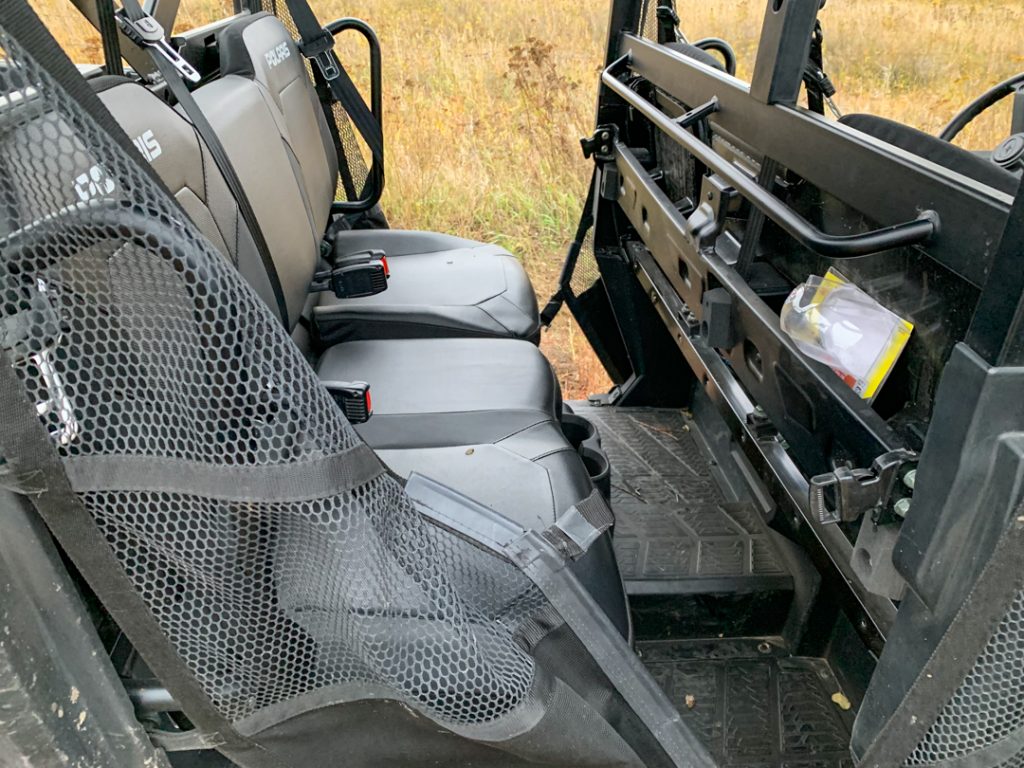
Rear seat legroom is a bit tight for taller passengers. Plus, some kind of covering on the metal crossmembers would be welcomed.
As with all Ranger vehicles in the Polaris lineup, the 1000 has a seemingly endless amount of accessories already available. From full cabs with heater systems, which came in really handy on our ride, to winches, bumpers, Lock N Ride accessories, and so much more. I noticed a marked improvement in fit and finish quality with the accessories on this Ranger 1000, too. Polaris is honing in on what the customers have wanted to make these best selling machines even better, and we can see the progress. The Ranger 1000 is still not without its quirks, though…
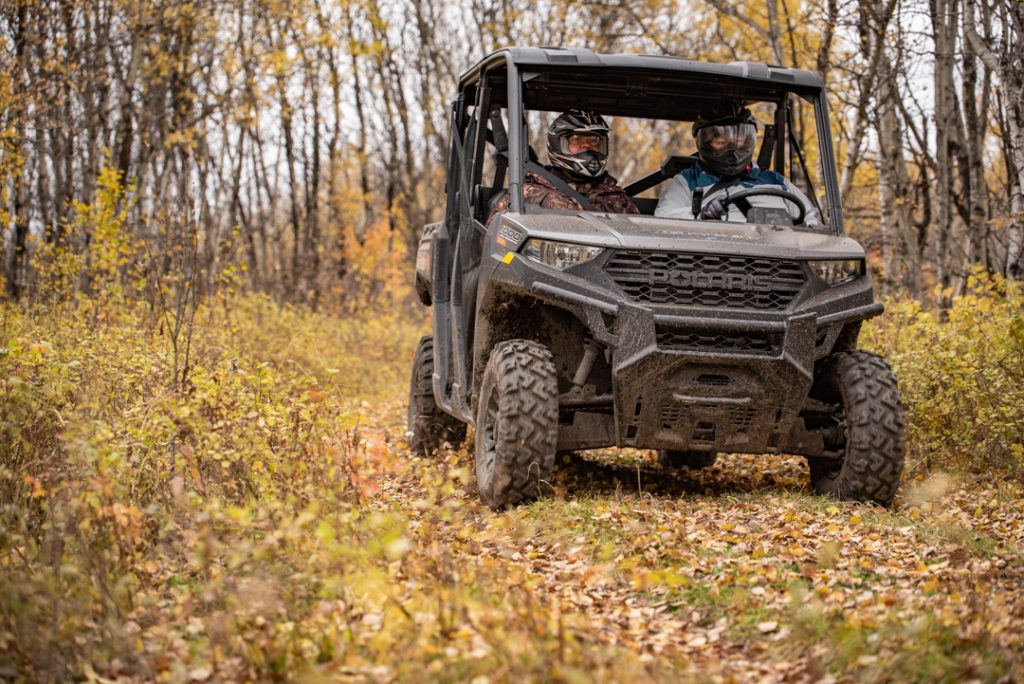
One of the highlights of this Ranger 1000 is the plush suspension. It really handles the trails well.
The first thing we noticed is the driveline noise, which isn’t bad unless you are stressing the 4WD system when it is engaged. We noticed extra noise coming from the middle to the front of the vehicle when off camber corners were taken on the gas, and the noise was only happening in 4WD.
Second, the cargo bed tends to rattle when going over rough terrain at fast speeds.
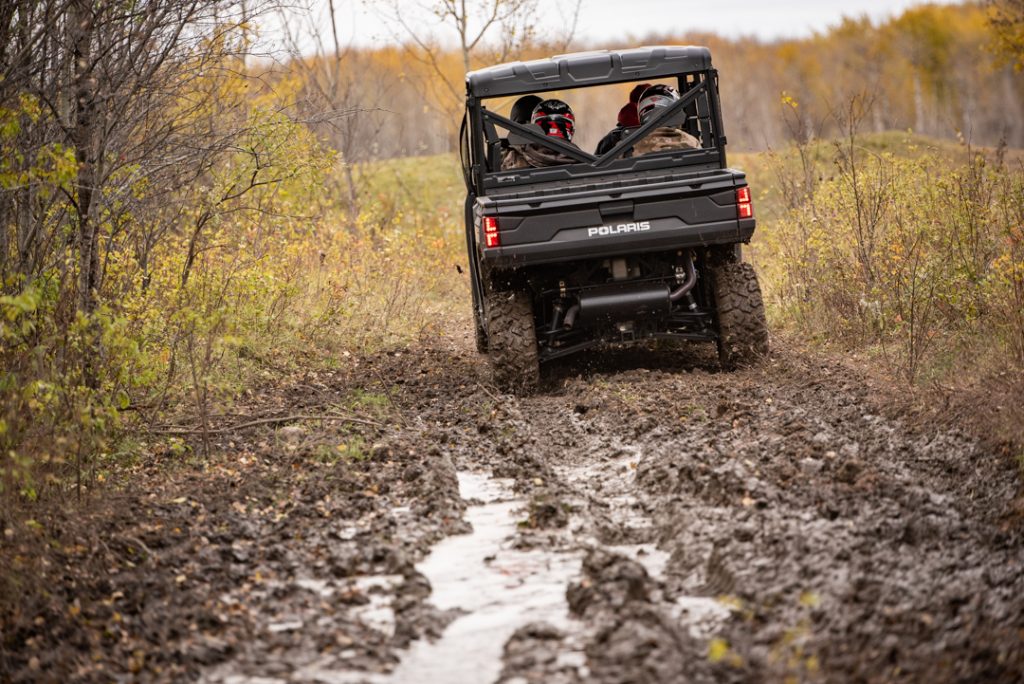
In deep mud sections, the stock tires clean out well, but they wander in between the ruts and don’t have a solid grip on traction.
Third, and this pertains to anyone over about 6’ tall, the rear seats are cramped for people with long legs. I’m 6’2” and came back with knees that had been constantly hitting the metal cross members that hold the front seats into place. I really wish they would affix some sort of plastic barrier or padding to the back of these cross members – this would really make the entire experience top notch when people are sitting in the rear seat. But, for now, anyone tall will want to sit in the front or risk coming home with knees that are battered.
Last but not least, the side nets and their attachment systems on the bottom, along with the plastic buckles on the top, are just plain silly at this point. Most people will end up not using these or taking them off, unfortunately, because they are a pain to put back into their place when out on the trail, and we had one buckle break on us when cruising down the trail, thus rendering the net unusable. It’s little things like this that are easy to change, and it wouldn’t keep me, personally, from buying this vehicle, but I sure hope Polaris changes these things up in the future. The Ranger 1000 would be nearly unbeatable with several more of these refinements.
Other than those couple of quirks, the Ranger 1000 is a great vehicle for a variety of people. The low end torque of this engine is truly phenomenal, and it has plenty of power for 95% of people and their daily tasks around the farm. The interior is comfortable and has plenty of storage for all of your necessities, and it will haul/tow pretty much anything you need it to, all in comfort with the plush yet capable suspension setup.
For the money, you get a lot with the Ranger 1000 and you really can’t go wrong with it. The vehicle is now arriving at dealerships nationwide, so be sure to check it out when you go to your local Polaris dealer.
As if driving Ranger’s around wasn’t enough on this trip, we also did some hunting! The Saskatoon area, and especially North Battlefield where we were located, has some of the best waterfowl hunting in the world. If you’re looking for a guided trip into this area, Northway Outfitters has one of the best reputations in the world. We thoroughly enjoyed their hospitality, knowledge about the area, and, most importantly, their knowledge and vast experience when it comes to hunting anything in this area. If you’re interested in joining them on a hunt in the future, we highly recommend you contact these guys for the full hunting experience.
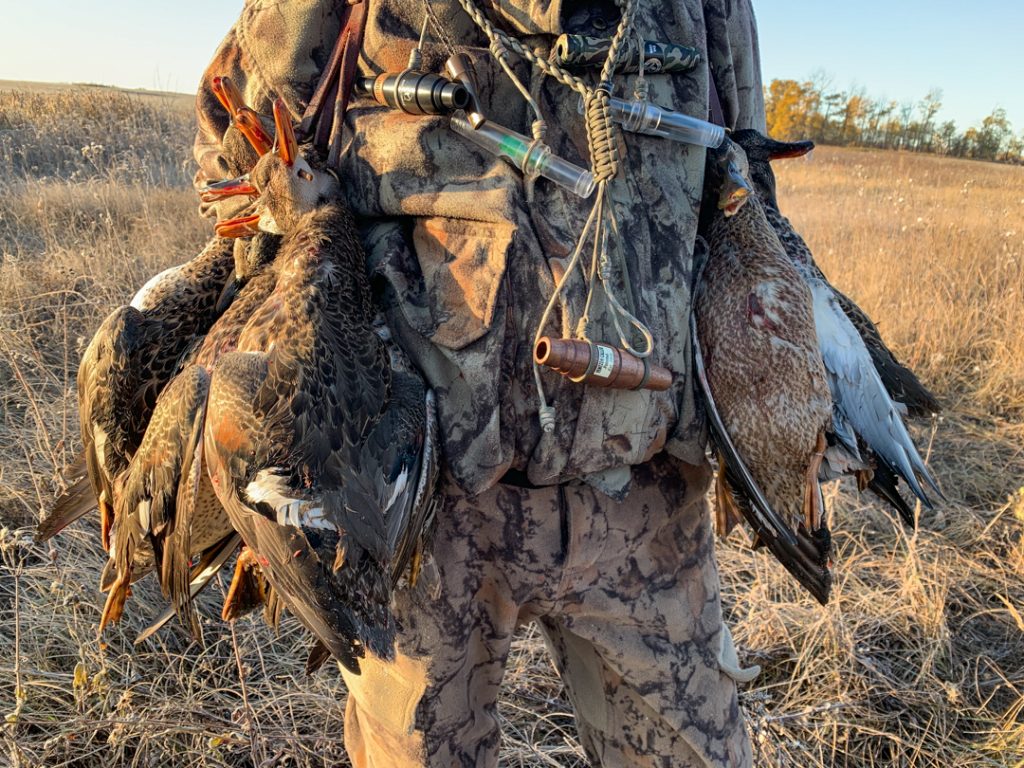
We also tried our luck at duck hunting on a frozen lake, and our early morning arrival/setup paid off in dividends.
Sure Shot game calls put all of this together, and we really appreciated the knowledge that they passed on to us, along with the rest of the team. I may have even learned the ins and outs of calling birds in to join the countless decoys we staged earlier in the day. Not to mention, setting all of those decoys up in the snow on the first day was an experience in and of itself! It might not seem like it, but all of the elements in the Saskatoon area provided the perfect place to test my mettle, both with a shotgun and a sight, and in the cold weather that presented itself on the trails. It was well worth my travel to reach this environment and enjoy the experience with newfound friends. We hope you venture up to the great white North one of these days and experience this awesomeness for yourself!
Until next time, we’ll see you on the trails…

